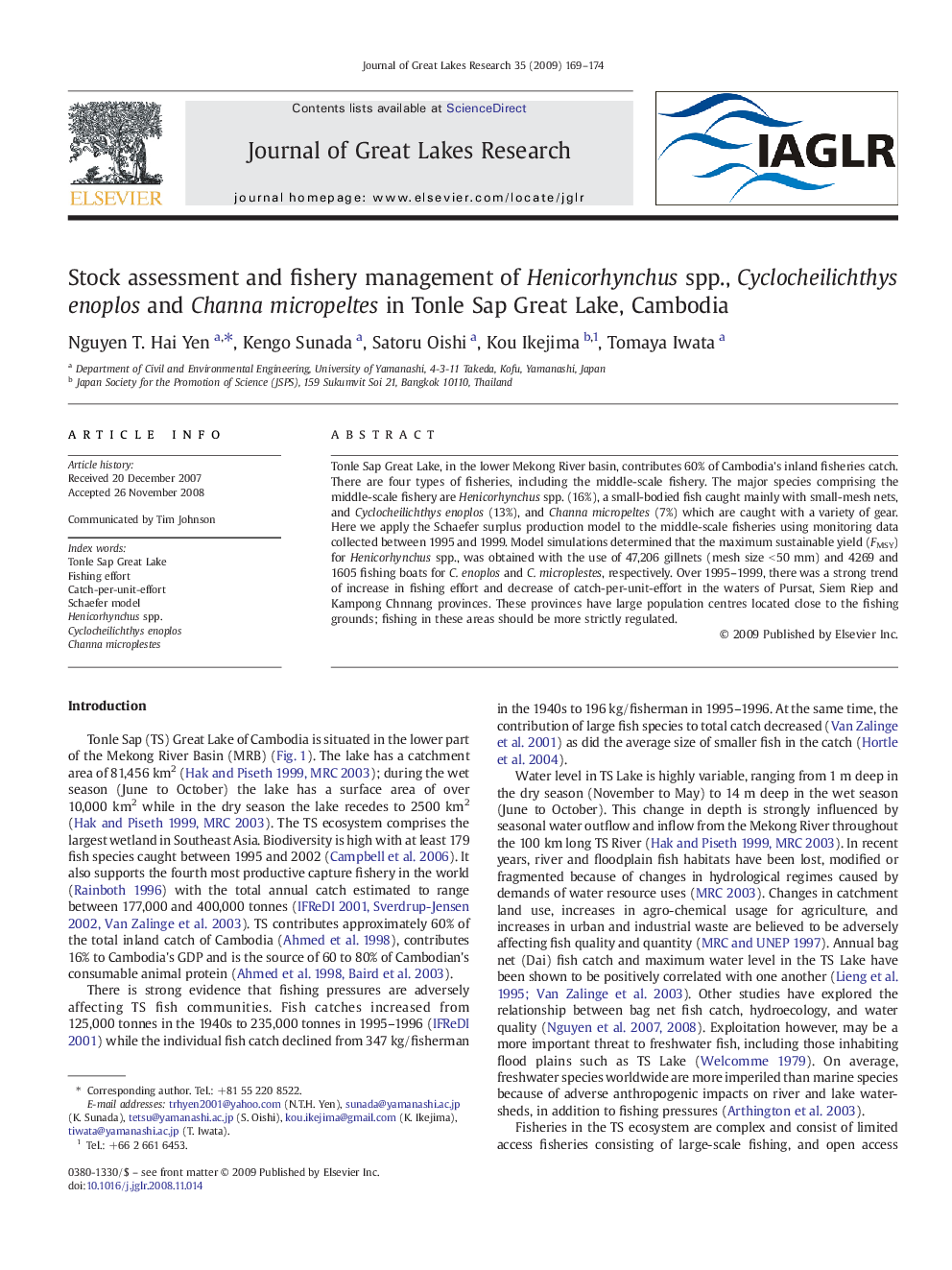| Article ID | Journal | Published Year | Pages | File Type |
|---|---|---|---|---|
| 4399357 | Journal of Great Lakes Research | 2009 | 6 Pages |
Tonle Sap Great Lake, in the lower Mekong River basin, contributes 60% of Cambodia's inland fisheries catch. There are four types of fisheries, including the middle-scale fishery. The major species comprising the middle-scale fishery are Henicorhynchus spp. (16%), a small-bodied fish caught mainly with small-mesh nets, and Cyclocheilichthys enoplos (13%), and Channa micropeltes (7%) which are caught with a variety of gear. Here we apply the Schaefer surplus production model to the middle-scale fisheries using monitoring data collected between 1995 and 1999. Model simulations determined that the maximum sustainable yield (FMSY) for Henicorhynchus spp., was obtained with the use of 47,206 gillnets (mesh size < 50 mm) and 4269 and 1605 fishing boats for C. enoplos and C. microplestes, respectively. Over 1995–1999, there was a strong trend of increase in fishing effort and decrease of catch-per-unit-effort in the waters of Pursat, Siem Riep and Kampong Chnnang provinces. These provinces have large population centres located close to the fishing grounds; fishing in these areas should be more strictly regulated.
